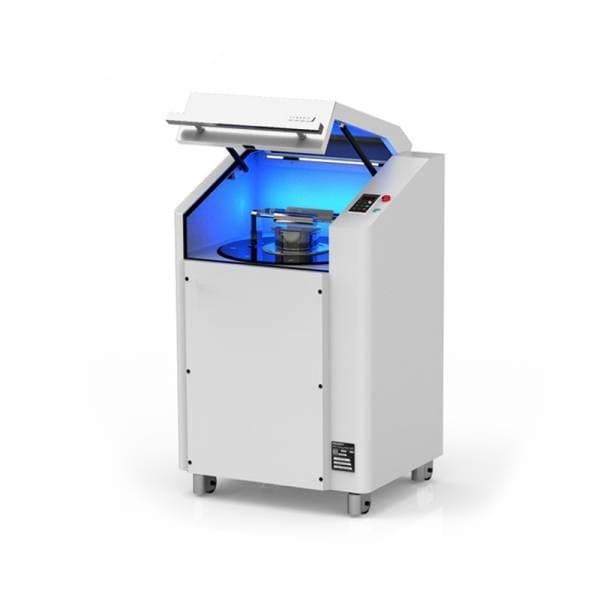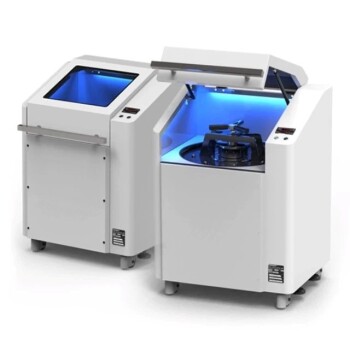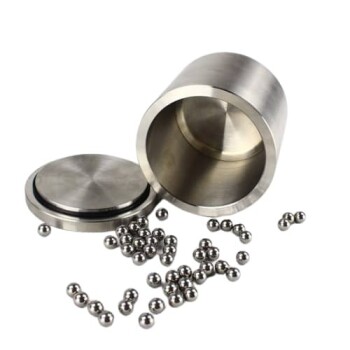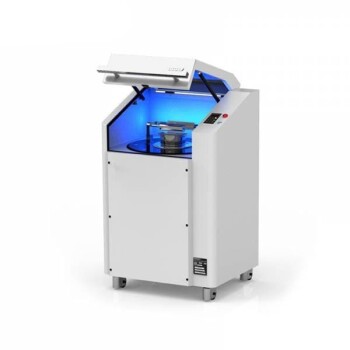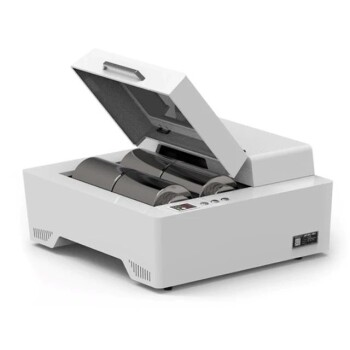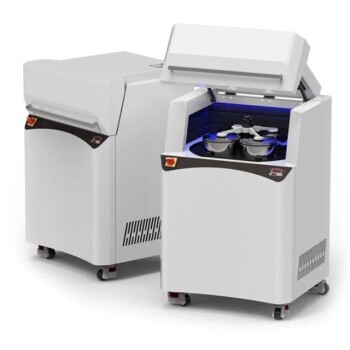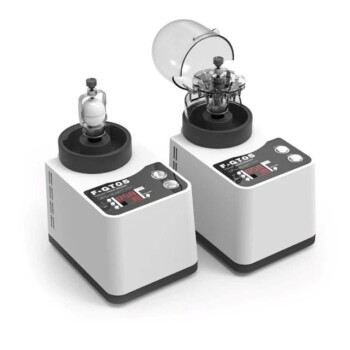Laboratory mills are specialized machines used to reduce non-homogenous batch samples into smaller, representative samples that are more uniform in composition. These mills, also known as laboratory mill grinders, use mechanical force to pulverize the samples and make them suitable for analysis and quality control testing.
The structure of a laboratory mill typically consists of a grinding element, such as a beater or cutting blade, housed within a stainless steel or disposable plastic milling chamber. The grinding element is powered by a high-speed motor, which can be controlled using a timer or digital controller.
Laboratory mills are widely used in a variety of settings, including research and development laboratories, quality control labs, and production facilities. They are an essential tool for preparing samples for analysis, ensuring the accuracy and reliability of test results.
What are Laboratory Mills Used For
The specific type of laboratory mill used depends on the physical properties of the sample being ground and the desired outcome of the grinding process. Here are some examples of how different types of laboratory mills can be used:
- Impact mills are suitable for grinding hard, brittle, or dried samples, such as grain, barley, cellulose, pharmaceuticals, resins, and seeds.
- Cutting mills are ideal for grinding elastic, fibrous, and soft materials, such as spices, hops, paper, plastics, and roots.
- Jaw crushers use a fixed and movable jaw to apply high pressure to crush glass and coal samples.
- Analytical mills are often used for impact grinding of frozen food and vegetation.
- Mortar grinders are used to pulverize dry or suspended organic samples, such as homogenized pastes or creams.
- Bead mills are effective for shearing cell and tissue culture samples.
Hardness
The Mohs Hardness Scale is a widely used method for measuring the relative hardness of materials. It is based on the principle that harder materials will scratch softer materials, and the scale is used to rank materials based on their ability to scratch or be scratched by other materials.
When selecting a laboratory mill for grinding a particular sample, it is important to consider the hardness of the sample. Harder materials may require a more robust mill with a stronger grinding element, while softer materials may be effectively ground with a less powerful mill.
For example, an impact mill may be more suitable for grinding hard, brittle materials, while a cutting mill may be more suitable for softer, fibrous materials. It is also important to consider the size and shape of the sample, as well as any other factors that may affect the grinding process, such as the desired fineness of the final product.
Examples of materials with a Mohs hardness of 5 include bone, iron, enamel, glass, and titanium. These materials are relatively hard and may require a more robust laboratory mill with a stronger grinding element to effectively grind them.
Materials with a Mohs hardness of 6, such as steel, silica, porcelain, and zirconium, are also considered hard and may require a powerful mill for grinding. It is important to consider the hardness of the sample when selecting a laboratory mill, as well as any other factors that may affect the grinding process, such as the size and shape of the sample and the desired fineness of the final product.
Sample Diameter
The particle size, or grain diameter, of the sample material is an important factor to consider when selecting a laboratory mill. Different laboratory mills are designed to handle different size ranges, and choosing the appropriate mill for the sample size is important for ensuring effective and efficient grinding.
For example, a laboratory mill that is specialized in pulverizing small-particle samples up to 7mm in diameter may not be suitable for grinding large-particle samples with a diameter of 10mm or more. In such cases, a mill that is designed to accommodate larger particles may be more appropriate.
Maximum Laboratory Mill Speed
The maximum grinding speed, or rotational speed, of a laboratory mill is an important factor to consider when selecting a mill for a particular sample. The maximum speed, typically stated in revolutions per minute (RPM), can influence the suitability of a mill for grinding certain types of samples.
For example, a mill with a high maximum speed may be more effective for grinding hard, brittle materials, while a mill with a lower maximum speed may be more suitable for softer, fibrous materials. The size and shape of the sample, as well as the desired fineness of the final product, can also affect the optimal speed for grinding.
It is important to choose a laboratory mill with a maximum speed that is appropriate for the intended use and the characteristics of the sample being ground. In general, higher speeds may result in finer grinds, but may also generate more heat and potentially cause sample degradation. Lower speeds may produce coarser grinds, but may also be less efficient and require longer grinding times.
Laboratory Mill Cooling Method
It is important to consider the cooling method when preparing samples for grinding in a laboratory mill. Effective cooling can help to maximize grinding efficiency and reduce wear and tear on the instrument.
Elastic or fibrous samples, such as rubber and plant materials, can be frozen over dry ice before grinding to make them more brittle and easier to grind. Biological samples, such as nucleic acids and proteins, can be cryogenically frozen in liquid nitrogen to preserve their structure and integrity.
Wet samples, such as those containing moisture or liquid, can be cooled and dried before milling to prevent adhesion to the grinding elements. This can help to prevent damage to the mill and ensure efficient grinding.
Laboratory Mill Volume
The volume of the sample being ground is an important factor to consider when selecting a laboratory mill. Different models of laboratory mills are designed to accommodate different sample volumes, and choosing a mill with the appropriate volume capacity is important for ensuring efficient and effective grinding.
Low-throughput models of laboratory mills are typically designed to handle smaller sample volumes, such as 40 ml or less. These mills may be suitable for applications where a smaller volume of sample is available or where the sample does not require extensive grinding.
High-throughput models of laboratory mills, on the other hand, are designed to process larger sample volumes, up to 250 ml or more. These mills may be more suitable for applications where a larger volume of sample is available or where more extensive grinding is required.
Motor
The motor output of a laboratory mill can be an important factor to consider when selecting a mill for a particular application. Laboratory mills with low-power motors, such as those with 80-Watt motors, may be suitable for grinding softer materials or for applications where a lower level of power is sufficient. On the other hand, high-power motors, such as those with 500-Watt motors, may be more suitable for grinding harder materials or for applications where more power is required.
It is important to choose a laboratory mill with a motor output that is appropriate for the intended use and the characteristics of the sample being ground. In general, higher motor outputs may result in more efficient and effective grinding, but may also generate more heat and potentially cause sample degradation. Lower motor outputs may be less efficient and require longer grinding times, but may also be more suitable for softer materials or applications where heat generation is a concern.
It is also important to consider the safety features of the laboratory mill, such as emergency-stop switches, overheating alarms, and grinding enclosures, to ensure the safety of the operator and the equipment.
More Special Features
Certain models of laboratory mills may include special features that can enhance the grinding process or improve the usability and safety of the mill. Here are some examples of special features that may be available on laboratory mills:
- Adjustable speed controls: Some models of laboratory mills may include rotary dials or touch-screen keypads that allow the user to adjust the mixing speed, target mixing speed, and mixing time. This can help to optimize the grinding process and achieve the desired results.
- GMP compliant: Some laboratory mills may be designed to meet Good Manufacturing Practice (GMP) standards, which may include features such as a removable, easy-to-clean steel grinding chamber and a USB interface for safe data export.
- Enclosed mill grinding chamber: Some models of laboratory mills may include an enclosed, plastic grinding chamber to protect the sample and the operator from exposure to the grinding process. The grinding chamber may also be disposable, allowing for long-term sample storage.
How to choose Laboratory Mills
When choosing a laboratory mill, there are several factors to consider to ensure that you select a model that is appropriate for your intended use and the characteristics of the sample being ground. Here are some steps you can follow to help choose the right laboratory mill:
- Determine the purpose of the mill: Consider the specific requirements of the application and the type of sample that will be ground. This will help to narrow down the selection of laboratory mills to those that are most suitable for the intended use.
- Consider the sample properties: The hardness, size, and shape of the sample, as well as any other factors that may affect the grinding process, such as the desired fineness of the final product, should be taken into account when selecting a laboratory mill.
- Consider the volume of the sample: Choose a laboratory mill with an appropriate volume capacity based on the size of the sample and the requirements of the grinding process. A mill that is too small may not be able to effectively grind a large volume of sample, while a mill that is too large may be unnecessarily costly and inefficient for a small volume of sample.
- Consider the motor output: The motor output of the laboratory mill can influence the efficiency and effectiveness of the grinding process. Choose a mill with a motor output that is appropriate for the intended use and the characteristics of the sample being ground.
- Consider special features: Some laboratory mills may include special features, such as adjustable speed controls, GMP compliance, or an enclosed grinding chamber, that can enhance the grinding process or improve the usability and safety of the mill. Consider which features are most important for your intended use and choose a model that includes these features.
By considering these factors, you can select a laboratory mill that is well-suited for your specific needs and requirements.
Kindle Tech Laboratory Mills
Are you looking for high-quality, reliable laboratory mills for your research, quality control, or production needs? Look no further! Our line of laboratory mills is designed to meet the diverse needs of scientists, engineers, and manufacturers across a wide range of industries.
Our state-of-the-art laboratory mills are equipped with advanced features to ensure efficient, effective grinding of a wide range of samples. From hard, brittle materials to soft, fibrous materials, we have a laboratory mill to suit your needs.
Our laboratory mills are backed by a team of expert engineers and technicians who are dedicated to providing the highest level of customer service and support. We are committed to helping you find the right laboratory mill for your application, and we offer a range of customization options to meet your specific needs.
So why wait? Contact us today to learn more about our top-quality laboratory mills and to request a quote. We look forward to serving you!
Related Products
- High Energy Planetary Ball Mill Milling Machine for Laboratory
- Laboratory Disc Cup Vibratory Mill for Sample Grinding
- Laboratory Ball Mill Jar Mill with Metal Alloy Grinding Jar and Balls
- Mini Planetary Ball Mill Machine for Laboratory Milling
- Laboratory Planetary Ball Mill Cabinet Planetary Ball Milling Machine
Related Articles
- Choosing the Best Material for Ball Mill: Essential Factors and Recommendations
- Planetary Ball Mills: Research Tools for Efficient Mixing and Nanoscale Grinding
- The Three Stages of Lab Crushing: A Comprehensive Guide
- Disc / Cup Vibratory Mill: A Comprehensive Guide for Laboratory Experts
- Understanding the Tablet Press Machine R&D Lab Model and its Features(2)
